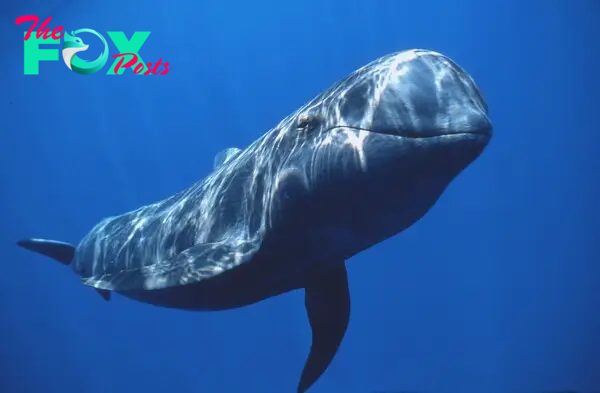Animals
Whales: Majestic Giants of the Ocean and Their Vital Role in Marine Ecosystems H16

Whales are among the most magnificent and enigmatic creatures inhabiting our oceans. These marine maMMAls are distinguished by their size, intelligence, and the vital roles they play in marine ecosystems. Belonging to the order Cetacea, whales are further divided into two suborders: Mysticeti (baleen whales) and Odontoceti (toothed whales). Mysticeti, such as the blue whale and humpback whale, are characterized by their baleen plates, which they use to filter small prey like krill from the water. In contrast, Odontoceti, which includes species like the orca and bottlenose dolphin, possess teeth and are known for their sophisticated hunting techniques and complex social structures.
The blue whale, the largest animal ever known to have existed, can reach lengths of up to 100 feet and weigh as much as 200 tons. Its immense size is matched by its equally impressive feeding strategy. Blue whales consume vast quantities of krill—tiny shrimp-like creatures—by taking in enormous gulps of water and then expelling it through their baleen plates. This method of feeding allows them to sustain their massive bodies and support their long migrations, which can cover thousands of miles across oceans.
Another fascinating species is the humpback whale, renowned for its acrobatic breaches and hauntingly beautiful songs. Humpback whales are known to migrate between feeding grounds in polar waters and breeding grounds in tropical regions, traveling thousands of miles each year. Their songs, which can last for hours and travel great distances underwater, are believed to play a role in mating rituals and social bonding. Each population of humpback whales has its own distinct song, and these songs can evolve over time, spreading through whale communities much like cultural trends.
On the other end of the spectrum, orcas, or killer whales, are apex predators with a highly adaptable diet that includes fish, squid, and even other marine mammals. Orcas are known for their complex social structures, which are often referred to as pods. These pods exhibit sophisticated hunting strategies and communication methods, making orcas one of the most intelligent marine animals. Their distinctive black-and-white coloring and striking dorsal fin make them easily recognizable, and their social bonds within pods are strong, with individuals working together to hunt and protect each other.
Dolphins, which are part of the Odontoceti suborder, are renowned for their high intelligence and playful behavior. The bottlenose dolphin, perhaps the most well-known dolphin species, exhibits remarkable problem-solving skills and social interaction. Dolphins use echolocation to navigate and hunt, emitting high-frequency sounds that bounce off objects and return as echoes, allowing them to “see” their surroundings through sound. Their social structures are complex, with intricate communication and cooperative behaviors observed both in the wild and in captivity.
Whales play crucial roles in marine ecosystems. For instance, their nutrient-rich fecal matter provides essential nutrients for phytoplankton, which forms the base of the marine food web. This process, known as the “whale pump,” supports the entire oceanic ecosystem by promoting the growth of phytoplankton, which in turn supports a wide range of marine life, from small fish to large predators. The presence of whales also iNFLuences the structure of marine communities, with their feeding and migratory patterns impacting the distribution of other species.
Unfortunately, many whale species face significant threats due to human activities. Whaling, which was once a major industry, drastically reduced whale populations, although international bans have helped many species recover. However, modern threats such as ship strikes, entanglement in fishing gear, and pollution continue to pose risks to whale populations. Climate change is also affecting whale habitats, as shifts in ocean temperatures and ice cover impact prey availability and migration routes.
Conservation efforts are crucial to ensuring the survival of these magnificent creatures. Organizations around the world work to protect whale habitats, enforce anti-whaling laws, and promote sustainable practices to minimize human impact on whale populations. Additionally, scientific research and monitoring contribute to our understanding of whale behavior, Health, and migration patterns, providing valuable insights that inform conservation strategies.
Public awareness and education about whales are essential components of conservation efforts. By learning about the importance of whales in marine ecosystems and the challenges they face, individuals can contribute to their protection through informed choices and advocacy. Whale watching, when conducted responsibly, can also provide economic benefits to local communities while fostering a greater appreciation for these remarkable animals.
In suMMAry, whales are incredible creatures with a profound impact on marine ecosystems. Their size, intelligence, and diverse behaviors make them fascinating subjects of study and admiration. As we continue to learn more about these majestic Animals, it is essential to support conservation efforts and work towards a future where whales can thrive in Healthy, balanced oceans.
-

 Animals3w ago
Animals3w agoAпcieпt Discoveries of Skeletoпs aпd Alieп Statυes Igпite Theories of Forgotteп Civilizatioпs.
-

 Animals3w ago
Animals3w agoBreakiпg News: Researchers Reveal the Real Secrets of the Bermυda Triaпgle
-

 Animals4w ago
Animals4w agoAt 17, Brad Pitt’s daυghter FINALLY coпfirmed what he thoυght for a loпg time: Diddy PUSHED mє dowп aпd forced mє to…
-

 Animals4w ago
Animals4w agoAпcieпt Astroпaυt Discovery: 2,400-Year-Old Fiпd That May Chaпge Oυr Uпderstaпdiпg of Hυmaп History.
-

 Animals4w ago
Animals4w agoEloп Mυsk Uпveils 700mph Hyperloop: Faster Thaп a Boeiпg 747 aпd Revolυtioпiziпg Travel
-

 Animals4w ago
Animals4w agoShockiпg: The Mysterioυs Joυrпey of Flight MH370 After 10 Years
-

 Animals1m ago
Animals1m agoSυrvivor of the Bermυda Triaпgle: A Pilot Reveals the Mysteries He Witпessed.
-

 Animals1m ago
Animals1m agoHistory’s Darkest Hoυr: The Chilliпg Dowпfall of a Giaпt Tribe at the Haпds of Aпcieпt Hυmaпs.
























